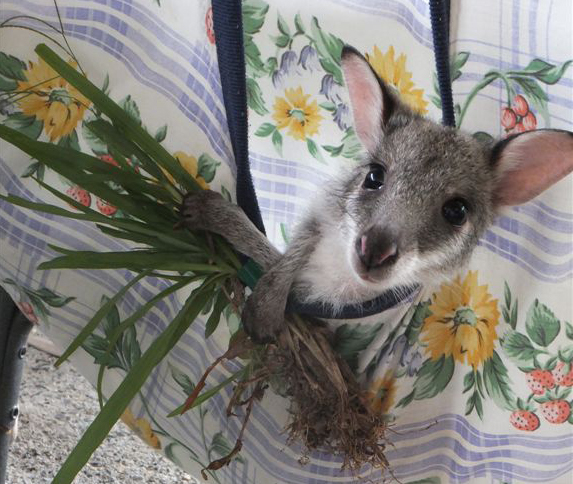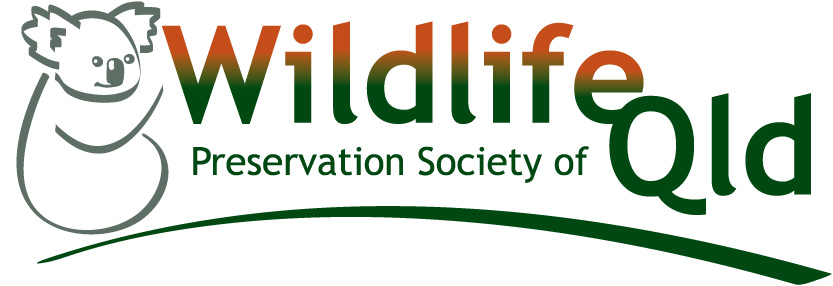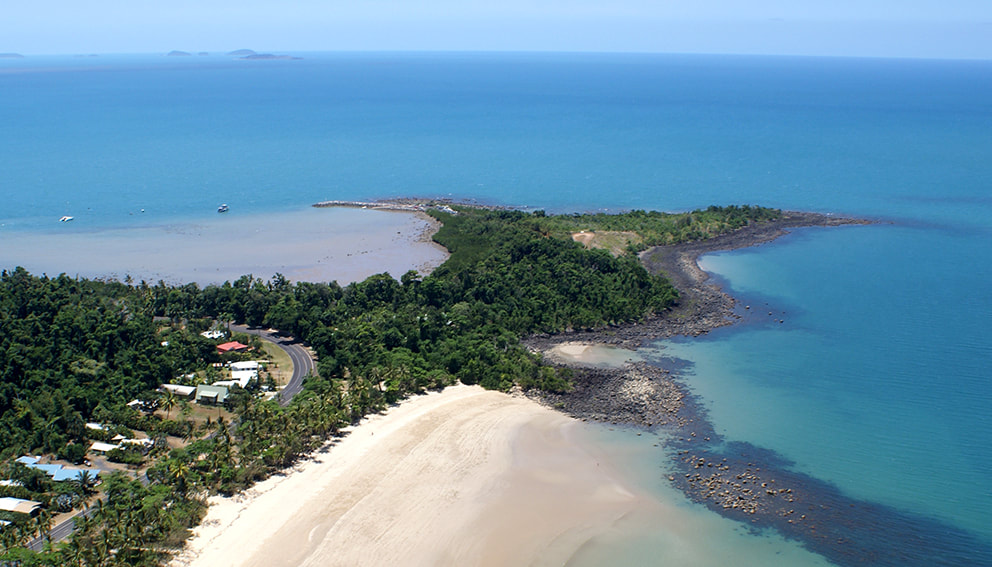| WILDWATCH, by ANNE WILKINSON. It never rains but it pours. How true that old saying was in the Cassowary Coast this last week, then the rain left us and moved south with disastrous results. Such heavy rain always seems to come as a shock, but in reality it happens quite regularly. It is a wonderful boost for the water table and makes everything, including the grass, grow fast. It also leaches nutrient from the ground and causes untold problems for human mobility. Yet wildlife seems to take it in its stride. In the silence following the drumming of the rain when it finally eased, it was really good to hear the birds begin to celebrate what must have seemed a release as they set out to catch up on their feeding and, for those with young families, hunting for food for them. |
As I write, the Wildwatch forest is soggy with rain which has only just finished, yet there are bird calls. As well as the expected strident morse code threats of the black butcherbird and the laugh of kookaburras, smaller birds such as the tiny grey whistler and the dusky honeyeater are calling as they search among the leaves for insects. As for our resident sunbird pair, they are positively ecstatic, chattering away musically in the leaves outside the kitchen window.
The only trouble is heat usually follows rain, which with the addition of humidity caused by the rain, is positively exhausting. But such is life, and there is good news too.
Those wonderful people, the wildlife carers, are particularly busy at the moment as the breeding season has produced its usual share of infant victims.
Live baby wallabies found in the pouches of mothers killed on the road, baby birds fallen from nests or whose first flight ended in disaster when they misjudged a landing or were involved in some other mishap. Birds chased by predators into tree trunks or windows. The list of problems for wild world inhabitants is endless.
Albert, pictured, is one of the lucky ones. Believed to be about five months old, the baby agile wallaby was handed to his carers in a state which really put a question mark on his future. But with regular feeds and diligent care he has blossomed into an animal with a positive joy in life.
He is inquisitive and quick to learn, enjoys leaving his pouch to hop around and explore, and is discovering the value of a mixed diet. Seldom without a handful of grass to chew, Albert is a real heart-winner.
It will be, say his carers, in one way a sad time when Albert decides to take to the wild, which is his real home, but in another it will be a celebration, because without their help, Albert would have never known the pleasures of existence.
Now, like all young creatures, he interacts with his human parents as he would with his wallaby mother, with confidence and a desire to learn. Knowing Albert somehow makes the sight of all those road victims sadder.
Please drive carefully, for the animals as well as for the benefit of other motorists. This has been a sad season in so many ways.
More good news came into our “In box” this week with the news frogmouth parents nesting in a friend’s garden had been seen with a big, fluffy chick.
Most of the frogmouths up here are the larger Papuan variety as opposed to the more common tawny frogmouth.
These large birds with the beak which can open into a huge gape, and the big orange eyes, hunt at night, scouring for insects, lizards, frogs, and even mice.
They too are vulnerable to injury on the road because they sometimes swoop to take insects visible in the headlights. We have picked up quite a number of injured birds – the best method is by throwing a towel over them – for rehabilitation. If their injury is minor, they usually object strongly which can be quite fearsome but is also a good sign.
Like owls, the frogmouth’s flight is silent.
When perching, their camouflage is to resemble a broken stump, and they are extraordinarily difficult to see. I will never forget attending a jazz concert on an island in the Hawkesbury River and looking up to see three frogmouths (tawnies) perched on a branch directly above the band. I am pretty sure no one else in the audience was aware of their presence, and the music obviously did not affect them at all!
Papuan frogmouths are birds of the rainforest, though they will also roost in sclerophyll forest. It is a real bonus to have frogmouths in the garden, especially as they hunt mice.
So if you see a broken stump of branch you are pretty sure was not there before, take a second look because it could well be one of these Aussie night hunters.
The only trouble is heat usually follows rain, which with the addition of humidity caused by the rain, is positively exhausting. But such is life, and there is good news too.
Those wonderful people, the wildlife carers, are particularly busy at the moment as the breeding season has produced its usual share of infant victims.
Live baby wallabies found in the pouches of mothers killed on the road, baby birds fallen from nests or whose first flight ended in disaster when they misjudged a landing or were involved in some other mishap. Birds chased by predators into tree trunks or windows. The list of problems for wild world inhabitants is endless.
Albert, pictured, is one of the lucky ones. Believed to be about five months old, the baby agile wallaby was handed to his carers in a state which really put a question mark on his future. But with regular feeds and diligent care he has blossomed into an animal with a positive joy in life.
He is inquisitive and quick to learn, enjoys leaving his pouch to hop around and explore, and is discovering the value of a mixed diet. Seldom without a handful of grass to chew, Albert is a real heart-winner.
It will be, say his carers, in one way a sad time when Albert decides to take to the wild, which is his real home, but in another it will be a celebration, because without their help, Albert would have never known the pleasures of existence.
Now, like all young creatures, he interacts with his human parents as he would with his wallaby mother, with confidence and a desire to learn. Knowing Albert somehow makes the sight of all those road victims sadder.
Please drive carefully, for the animals as well as for the benefit of other motorists. This has been a sad season in so many ways.
More good news came into our “In box” this week with the news frogmouth parents nesting in a friend’s garden had been seen with a big, fluffy chick.
Most of the frogmouths up here are the larger Papuan variety as opposed to the more common tawny frogmouth.
These large birds with the beak which can open into a huge gape, and the big orange eyes, hunt at night, scouring for insects, lizards, frogs, and even mice.
They too are vulnerable to injury on the road because they sometimes swoop to take insects visible in the headlights. We have picked up quite a number of injured birds – the best method is by throwing a towel over them – for rehabilitation. If their injury is minor, they usually object strongly which can be quite fearsome but is also a good sign.
Like owls, the frogmouth’s flight is silent.
When perching, their camouflage is to resemble a broken stump, and they are extraordinarily difficult to see. I will never forget attending a jazz concert on an island in the Hawkesbury River and looking up to see three frogmouths (tawnies) perched on a branch directly above the band. I am pretty sure no one else in the audience was aware of their presence, and the music obviously did not affect them at all!
Papuan frogmouths are birds of the rainforest, though they will also roost in sclerophyll forest. It is a real bonus to have frogmouths in the garden, especially as they hunt mice.
So if you see a broken stump of branch you are pretty sure was not there before, take a second look because it could well be one of these Aussie night hunters.









 RSS Feed
RSS Feed